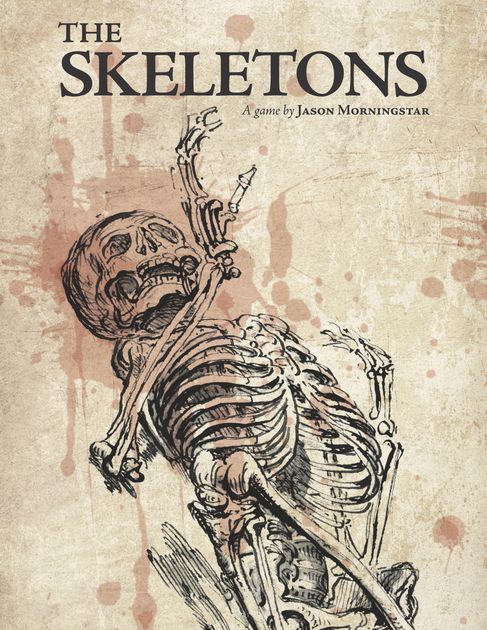I’m on a study project to improve my understanding of roleplaying games. To this end, I already have two reading projects, A Game Per Year and An Adventure Per Year. This is the third, with the goal of reading or playing 52 games made in the last few years. Originally I considered making this “A New RPG Per Week” and that’s where the number 52 comes from, even though a weekly schedule is probably not within my abilities.

The Skeletons is a freeform roleplaying game by Jason Morningstar, the designer of Fiasco and Night Witches. It contains a simple scenario in which you play a skeleton guarding a tomb periodically visited by intruders as well as a couple of variants.
The scenario plays upon the classic roleplaying game trope of the dungeon crawl where the characters attempt to rob a tomb. An early example is Tomb of Horrors. For me, the clearest reference point was the videogame Skyrim in which you rob a wide variety of tombs, often guarded by skeletons (called Draugr in that game).
The action in The Skeletons is focused on the scenes when someone comes to the tomb. The characters are compelled to attempt to repel these invaders as well as they are able. However, despite this framing, The Skeletons is not about violence or combat. Rather, these scenes represent the only time the skeletons can think, express themselves and communicate, at least with each other. While they are bashing intruders they also remember, argue and feel.
Because of this, the actual action in each scene is just a matter of description. The real substance is in the personal, philosophical and emotional side of the experience. On those terms, The Skeletons is a sad game. Death has already taken everything from the characters and now they must witness as the relentless grind of time turns the fading memory of the world they came from into dust.
In terms of game design, The Skeletons makes an interesting use of inaction, a rare design component in roleplaying games. Between each scene, the characters wait immobile in silence for the next intruders. Similarly, the players wait in silence with the lights turned off for an increasingly long time. In the beginning, this wait can be five seconds and in the end five minutes.
Used well, inaction can be a very powerful tool because it prepares and primes the participants for when they get to do something. However, it’s also very hard to use well. In The Skeletons, the design is simple and very elegant.